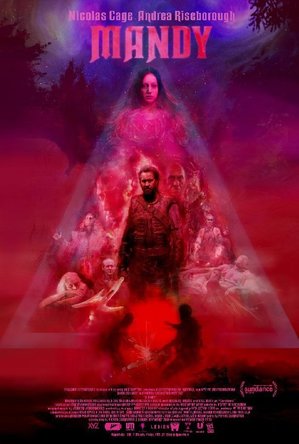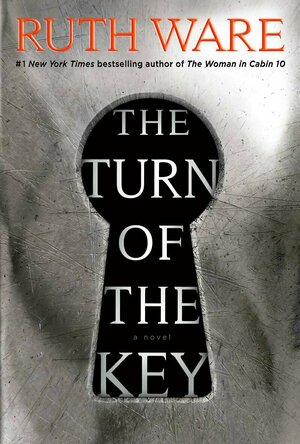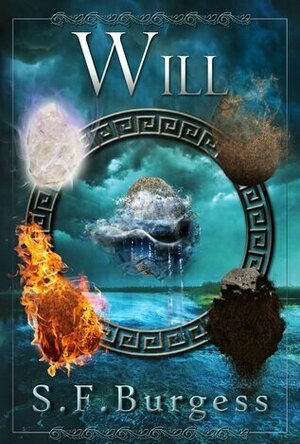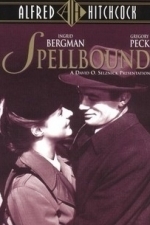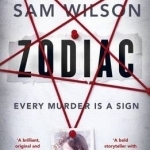Search
Search results
Kristy H (1252 KP) rated In a Holidaze in Books
Oct 29, 2020
A joyful and flirty holiday romance
Maelyn Jones spends every Christmas at her favorite place in the world: a cabin owned by her parents' friends in Utah. She joins her (divorced) parents, younger brother Miles, and two other families for a magical Christmas experience--cookie baking, snow creature making contests, holiday scavenger hunts, and more. She's been sleeping in the basement in the "kid bunk beds" with Miles and family friends Theo and Andrew for years, despite the fact that they are adults now. But this year, it's all ruined: their friends are selling the cabin and Mae is humiliated after an embarrassing encounter with Theo. As her family drives away from the cabin one last time, she makes a desperate plea for happiness. Then she sees a car headed straight toward theirs, and it all goes black. When she awakes, she's back on a plane headed to Utah, headed to the same holiday trip. As various disasters return Mae to the plane over and over, she realizes she's in a time loop--she needs to break free, and figure out to find true love and happiness, once and for all.
"So I ask the universe, simply: Can you show me what will make me happy?"
I know I must have read this synopsis when I requested this book, but I didn't reread it before starting, because hello, CLo, enough said. So I was slightly surprised by the Groundhog Day-esque story to this one, but I went with the flow. Luckily Mae is funny and charming enough to make just about anything fly, even a crazy time loop plot where you're not exactly sure how or why she's in it or quite what she's supposed to do to get out of it.
"'I think it's possible I'm in the past, repeating the same holiday, and I'm the only one who knows it.'"
It took a little while for the romance to heat up here, but once it did, the book was off and running. And boom! It's a sweet read, but flirty and romantic too. I loved Mae and her crush--they crackled and simmered. Honestly, the time loop piece was secondary to their joyful love. Seeing Mae come into her own made everything else less important, including Mae's reliving of her holiday. (And I enjoyed how she took to it so quickly--don't eat that, you're going to need this, tell me a secret so I can prove this to you next time--you go girl, embrace the loop!).
So, yes, while this book is a little crazy, it's also sweet and happy, too. It's a perfect Christmas read for a snowy day (or a fall day when you feel like the world is falling apart). 4 stars.
"So I ask the universe, simply: Can you show me what will make me happy?"
I know I must have read this synopsis when I requested this book, but I didn't reread it before starting, because hello, CLo, enough said. So I was slightly surprised by the Groundhog Day-esque story to this one, but I went with the flow. Luckily Mae is funny and charming enough to make just about anything fly, even a crazy time loop plot where you're not exactly sure how or why she's in it or quite what she's supposed to do to get out of it.
"'I think it's possible I'm in the past, repeating the same holiday, and I'm the only one who knows it.'"
It took a little while for the romance to heat up here, but once it did, the book was off and running. And boom! It's a sweet read, but flirty and romantic too. I loved Mae and her crush--they crackled and simmered. Honestly, the time loop piece was secondary to their joyful love. Seeing Mae come into her own made everything else less important, including Mae's reliving of her holiday. (And I enjoyed how she took to it so quickly--don't eat that, you're going to need this, tell me a secret so I can prove this to you next time--you go girl, embrace the loop!).
So, yes, while this book is a little crazy, it's also sweet and happy, too. It's a perfect Christmas read for a snowy day (or a fall day when you feel like the world is falling apart). 4 stars.
Jesters_folly (230 KP) rated Mandy (2018) in Movies
Sep 25, 2019
Contains spoilers, click to show
Red Miller (Nicholas Cage) is sent on a rampaging quest for vengeance when an evil cult abducts and kill his partner, Mandy Bloom.
The story is simple, Mandy and Red live alone in a forest. By chance Mandy is spotted by a cult leader who decided that he wants her to join him. Things don’t go to plan and Mandy ends up dead and Red starts on a quest for revenge. Simple and familiar, it’s not an uncommon plot, however Mandy is part film, part drug filled dream with snippets of animation thrown in, overlaid with a psychedelic, prog rock soundtrack. It has drugs, cults, demonic, slipknot esc bikers, (male) nudity, chainsaws and crossbows, religious parables and Jesus parallels. There is a metaphorical decent to hell and there is Nicholas Cage. All this is shot with constantly changing, coloured filters and distorted voices.
You can probably tell that Mandy isn’t for everyone, at times the film feels like an Italian horror, something like Suspiria or Deep Red and other time it seems like someone has brought a 70’s or 80’s rock/metal album cover to life. Throw in some animation that would be at home in ‘Heavy Metal’ Magazine, turn the crazy dial up to 11 and let Nicolas Cage (slowly) off the sanity leash and you have Mandy.
There are plot point that are not explained, for example Red suddenly has a friend who has a cross bow stored away for him and Red suddenly has a forge and knows how to use it. Is Mandy some kind of witch and, of course, is Red dead at the end.
I would say that there are some crazy scenes but the whole film is crazy but it does lead to some great scene’s like a chainsaw duel.
As I said, Mandy isn’t for everyone, it has a simple plot that has been turned in to a surreal nightmare so if you don’t like weird don’t watch this.
Mandy is also slow to get started as it builds up the atmosphere. I think that, if the film kept the atmosphere it starts with it could have been a similar tone to something like Midsommar however by the halfway point it has past that and, by the end the film just takes a head dive down the rabbit hole (almost literally).
Given all that I found it hard to rate, it has the feel of a 70’s horror and an 80’s grindhouse, some of the filters make it hard to understand some of the lines and the colour filters were disturbing and distracting although most of this was on purpose but over all I did enjoy it.
The story is simple, Mandy and Red live alone in a forest. By chance Mandy is spotted by a cult leader who decided that he wants her to join him. Things don’t go to plan and Mandy ends up dead and Red starts on a quest for revenge. Simple and familiar, it’s not an uncommon plot, however Mandy is part film, part drug filled dream with snippets of animation thrown in, overlaid with a psychedelic, prog rock soundtrack. It has drugs, cults, demonic, slipknot esc bikers, (male) nudity, chainsaws and crossbows, religious parables and Jesus parallels. There is a metaphorical decent to hell and there is Nicholas Cage. All this is shot with constantly changing, coloured filters and distorted voices.
You can probably tell that Mandy isn’t for everyone, at times the film feels like an Italian horror, something like Suspiria or Deep Red and other time it seems like someone has brought a 70’s or 80’s rock/metal album cover to life. Throw in some animation that would be at home in ‘Heavy Metal’ Magazine, turn the crazy dial up to 11 and let Nicolas Cage (slowly) off the sanity leash and you have Mandy.
There are plot point that are not explained, for example Red suddenly has a friend who has a cross bow stored away for him and Red suddenly has a forge and knows how to use it. Is Mandy some kind of witch and, of course, is Red dead at the end.
I would say that there are some crazy scenes but the whole film is crazy but it does lead to some great scene’s like a chainsaw duel.
As I said, Mandy isn’t for everyone, it has a simple plot that has been turned in to a surreal nightmare so if you don’t like weird don’t watch this.
Mandy is also slow to get started as it builds up the atmosphere. I think that, if the film kept the atmosphere it starts with it could have been a similar tone to something like Midsommar however by the halfway point it has past that and, by the end the film just takes a head dive down the rabbit hole (almost literally).
Given all that I found it hard to rate, it has the feel of a 70’s horror and an 80’s grindhouse, some of the filters make it hard to understand some of the lines and the colour filters were disturbing and distracting although most of this was on purpose but over all I did enjoy it.
ClareR (6054 KP) rated The Turn of The Key in Books
Aug 18, 2019
I’ve read some pretty spooky books in my time, but none have had me on the edge of my seat in quite the same way as Turn of the Key by Ruth Ware did! There’s an underlying menace in this book - nothing explicit - and I think that makes it all the more frightening. I can’t even tell you the amount of times I told the lead character, a Nanny from London, to just pack up, leave the children with the housekeeper, and go home!
So, as I’ve already begun to say, Rowan is a Nanny who has been employed to look after the children of a wealthy husband and wife architecture team. They work away from home, and need someone to take care of their young children (plus a 14 year old who comes home from boarding school at the weekend). It all seems very rushed, and when Rowan turns up to take her post, Sandra (the mum) drops the bombshell that they will both be leaving for a week the next day. The children haven’t even had a chance to get to know Rowan with their mum there! Sandra leaves a huge folder with instructions for EVERYTHING regarding the children, and a very quick lesson on ‘Happy’, the house computer system (kind of like Alexa, but less chatty and far less easy to use!). I would’ve said something here, but Rowan seems to be desperate for the job. She seems to be a nice enough person, but she does make allusions to her temper, and does seem to lose it with the children quite a bit. But I’m not surprised - she is woken up every night, either by bumps and pacing sounds, or Happy seemingly having a huge glitch and playing loud music whilst turning on lights throughout the house in the early hours. Well, Maddie, the 8 year old, did warn her about the displeasure of the ghosts at her interview.....
I loved how creepy this was - I didn’t know what was real and what Rowan was imagining because of sleep deprivation, but it made all of the days seem to merge together. You could feel how tired and scared she must have been.
The last fifth of the book was something else though. I can’t think of many books where I’ve actually told a character out loud “No!” (It made my dogs stop and look!). The last few (yes, FEW!) revelations and twists kept the tension running right up to the end.
Have I said that I loved this book? This is my second Ruth Ware book, and it certainly won’t be my last - this is even better than The Death of Mrs Westaway (if that’s possible!).
Many thanks to The Pigeonhole for serialising this book - you did it again! Another absolutely cracking choice!
So, as I’ve already begun to say, Rowan is a Nanny who has been employed to look after the children of a wealthy husband and wife architecture team. They work away from home, and need someone to take care of their young children (plus a 14 year old who comes home from boarding school at the weekend). It all seems very rushed, and when Rowan turns up to take her post, Sandra (the mum) drops the bombshell that they will both be leaving for a week the next day. The children haven’t even had a chance to get to know Rowan with their mum there! Sandra leaves a huge folder with instructions for EVERYTHING regarding the children, and a very quick lesson on ‘Happy’, the house computer system (kind of like Alexa, but less chatty and far less easy to use!). I would’ve said something here, but Rowan seems to be desperate for the job. She seems to be a nice enough person, but she does make allusions to her temper, and does seem to lose it with the children quite a bit. But I’m not surprised - she is woken up every night, either by bumps and pacing sounds, or Happy seemingly having a huge glitch and playing loud music whilst turning on lights throughout the house in the early hours. Well, Maddie, the 8 year old, did warn her about the displeasure of the ghosts at her interview.....
I loved how creepy this was - I didn’t know what was real and what Rowan was imagining because of sleep deprivation, but it made all of the days seem to merge together. You could feel how tired and scared she must have been.
The last fifth of the book was something else though. I can’t think of many books where I’ve actually told a character out loud “No!” (It made my dogs stop and look!). The last few (yes, FEW!) revelations and twists kept the tension running right up to the end.
Have I said that I loved this book? This is my second Ruth Ware book, and it certainly won’t be my last - this is even better than The Death of Mrs Westaway (if that’s possible!).
Many thanks to The Pigeonhole for serialising this book - you did it again! Another absolutely cracking choice!

Time Tangle - Adventure Time
Games and Entertainment
App
What time is it? Time to puncha some buns! Rip it up in Time Tangle! PUNCH STUFF Oh, snaps! Finn...

Contacts Journal CRM
Business and Productivity
App
Contacts Journal CRM is a powerful tool that will transform your business and personal...

Hymnal SDA,
Music and Book
App
Highlights: • Complete music scores and lyrics for all of the 695 hymns in the SDA hymnal •...
Merissa (13668 KP) rated Will (The Books of the Five #2) in Books
Apr 12, 2023
You know when you read the first book in a series, fall in love with it, and presume that the next book won't be anywhere near as good... just because?! That's how I felt when I started Will. I had loved Eleanor and devoured every word. There was no way that Will could be that good, could it? OMG, yes it could be that good and even better. This book completely surpassed my expectations and took me on a poignant, raw and intense journey alongside the main character.
This lady is simply amazing as an author because she will make you dislike a character intensely and yet, within a few phrases, you will feel sorry for or like the same character. There is so much detail in her writing that you are left in no doubt as to the surroundings, expressions or feelings.
Now, it was a while ago that I read Eleanor so a few things were lost to me when I started but I quickly picked up again and proceeded to thoroughly enjoy this story. Because of the time delay though, it was unclear to me just what the problem was with Will. I was almost hoping that it wasn't simply his age because every time he said about being old, I winced as I am older than he is! This story actually hit me hard when all the secrets are revealed and I was sobbing big, ugly tears. I just can't tell you how good this story is, to have it affect me in that way.
One thing I will add though is that if you visit the author's website - http://www.mydren.com/ - you will find information about Eleanor and Will plus loads of other interesting snippets so you quickly come up to speed.
S.F. Burgess has put the Epic back into Fantasy. This book is worth every moment of your time and I can't imagine it being any shorter. Every word is needed and used with great effect.
One warning I will give and it's the same reason I have put Dark down as one of the genres - this book deals with some dark subjects, torture being one of them, and there is violence. None of this is gratuitous though and is definitely needed to make the story a better one.
HIGHLY RECOMMENDED for all Epic Fantasy fans out there who like a darker tale. If you want all glitter and rainbows then maybe you should try something else. For me personally, I will be waiting with bated breath for the release of Amelia, book 3. I really can't wait!!
* A copy of this book was provided to me with no requirements for a review. I voluntarily read this book; the comments here are my honest opinion. *
Merissa
Archaeolibrarian - I Dig Good Books!
August 30, 2016
This lady is simply amazing as an author because she will make you dislike a character intensely and yet, within a few phrases, you will feel sorry for or like the same character. There is so much detail in her writing that you are left in no doubt as to the surroundings, expressions or feelings.
Now, it was a while ago that I read Eleanor so a few things were lost to me when I started but I quickly picked up again and proceeded to thoroughly enjoy this story. Because of the time delay though, it was unclear to me just what the problem was with Will. I was almost hoping that it wasn't simply his age because every time he said about being old, I winced as I am older than he is! This story actually hit me hard when all the secrets are revealed and I was sobbing big, ugly tears. I just can't tell you how good this story is, to have it affect me in that way.
One thing I will add though is that if you visit the author's website - http://www.mydren.com/ - you will find information about Eleanor and Will plus loads of other interesting snippets so you quickly come up to speed.
S.F. Burgess has put the Epic back into Fantasy. This book is worth every moment of your time and I can't imagine it being any shorter. Every word is needed and used with great effect.
One warning I will give and it's the same reason I have put Dark down as one of the genres - this book deals with some dark subjects, torture being one of them, and there is violence. None of this is gratuitous though and is definitely needed to make the story a better one.
HIGHLY RECOMMENDED for all Epic Fantasy fans out there who like a darker tale. If you want all glitter and rainbows then maybe you should try something else. For me personally, I will be waiting with bated breath for the release of Amelia, book 3. I really can't wait!!
* A copy of this book was provided to me with no requirements for a review. I voluntarily read this book; the comments here are my honest opinion. *
Merissa
Archaeolibrarian - I Dig Good Books!
August 30, 2016
Phillip McSween (751 KP) rated Spellbound (1945) in Movies
Jun 13, 2022
Not the First Hitchcock You Should Watch
When Dr. Anthony Edwardes arrives at a mental hospital in Vermont to replace existing hospital director, Dr. Constance Peterson quickly recognizes him as an impostor. The impostor not only comes clean but also fears he may have killed the real Edwards. It is up to the impostor and Constance to find out the truth of what really happened.
Acting: 10
Gregory Peck is one of the shining actors of the 1940’s and his performance as the impostor doesn’t disappoint. His ability to draw in emotion always manages to root my attention into a scene. Ingrid Bergman was also sensational as Dr. Peterson. The chemistry between the two actors carried the majority of the scenes.
Beginning: 3
Characters: 10
The characters give you just enough throughout the story to move things along. While I did hold out hope that some of the characters would be fleshed out slightly better, I didn’t mind working with what the story gave me. I can’t give away too much without fear of spoilers, but i will say that some of the backstories took an interesting turn.
Cinematography/Visuals: 10
Another man that doesn’t disappoint when it comes to cinematography: Alfred Hitchcock. Mans is in his bag with some really creative shots that probably surprised a 1945 audience. From dream sequences to flashbacks, Hitchcocks devotion to his craft is on full display. Definitely a strong suit of this film.
Conflict: 4
Entertainment Value: 7
At one point in my notes I wrote, “The premise is great. I think it’s the execution that is a little off.” You can see glimpses of where Spellbound wanted to take off, but it’s usually shortlived. I hung in there for the creativity of the premise, but that can only get you so far. Too many lulls and letdowns spoiled the overall experience.
Memorability: 4
Pace: 2
The talking. All the damn talking all the time. Good…Lord. The film is STUFFED with dialogue, 111 minutes of talka-talka-talka. The lack of action begins in the first twenty minutes and becomes and ongoing theme, unfortunately. “Show don’t tell” did not apply here.
Plot: 9
Resolution: 10
Despite my disappointment with how slowly things moved, the film was wrapped up nicely. It actually made me even more upset with the movie as a whole because the ending was great potential for what ALL of Spellbound should have been. This film could have done a ton of things better. The ending, though? Solid.
Overall: 69
Not my favorite Hitchcock, Spellbound misses the mark in a number of different departments. I don’t know, it left a bad taste in my mouth and left me unfulfilled. If you’re looking to work through Hitchcock’s filmography, maybe save this one for later on down the road.
Acting: 10
Gregory Peck is one of the shining actors of the 1940’s and his performance as the impostor doesn’t disappoint. His ability to draw in emotion always manages to root my attention into a scene. Ingrid Bergman was also sensational as Dr. Peterson. The chemistry between the two actors carried the majority of the scenes.
Beginning: 3
Characters: 10
The characters give you just enough throughout the story to move things along. While I did hold out hope that some of the characters would be fleshed out slightly better, I didn’t mind working with what the story gave me. I can’t give away too much without fear of spoilers, but i will say that some of the backstories took an interesting turn.
Cinematography/Visuals: 10
Another man that doesn’t disappoint when it comes to cinematography: Alfred Hitchcock. Mans is in his bag with some really creative shots that probably surprised a 1945 audience. From dream sequences to flashbacks, Hitchcocks devotion to his craft is on full display. Definitely a strong suit of this film.
Conflict: 4
Entertainment Value: 7
At one point in my notes I wrote, “The premise is great. I think it’s the execution that is a little off.” You can see glimpses of where Spellbound wanted to take off, but it’s usually shortlived. I hung in there for the creativity of the premise, but that can only get you so far. Too many lulls and letdowns spoiled the overall experience.
Memorability: 4
Pace: 2
The talking. All the damn talking all the time. Good…Lord. The film is STUFFED with dialogue, 111 minutes of talka-talka-talka. The lack of action begins in the first twenty minutes and becomes and ongoing theme, unfortunately. “Show don’t tell” did not apply here.
Plot: 9
Resolution: 10
Despite my disappointment with how slowly things moved, the film was wrapped up nicely. It actually made me even more upset with the movie as a whole because the ending was great potential for what ALL of Spellbound should have been. This film could have done a ton of things better. The ending, though? Solid.
Overall: 69
Not my favorite Hitchcock, Spellbound misses the mark in a number of different departments. I don’t know, it left a bad taste in my mouth and left me unfulfilled. If you’re looking to work through Hitchcock’s filmography, maybe save this one for later on down the road.
Zuky the BookBum (15 KP) rated Zodiac in Books
Mar 15, 2018
Also find my review here: http://bookbum.weebly.com/book-reviews/june-29th-2016
Firstly I'd like to thank Netgalley and Penguin UK - Michael Joseph for giving me the opportunity to read this book in an exchange for a review.
<b><i>"How much worse would the world be if everyone was colour-coded? If people thought they could tell someone's essence at a glance, and discrimination became purely thoughtless? … Maybe people wouldn't spend so much time making sure they acted, sounded and thought the same as their neighbours, if they weren't terrified of being mistaken for the wrong sign. Maybe they'd realise how arbitrary it truly was."</b></i>
This was such a tricky debut novel. The premise was incredibly unique and intriguing that it almost became difficult for the author to live up to the expectations of the plot. Not to say that all debut crime novels are crap but this was such a complex story that I think only really experienced writers like Stephen King or even Gillian Flynn could have shaped it into what it was supposed to be.
I was initially attracted to this book because of the front cover and because the idea of a society where you are segregated by your star sign is a really interesting and unique twist on a look at modern society. Plus I love a crime thriller and had read some good things about this already.
To my disappointment, I felt this started off really slow. I almost couldn’t get into it, but I decided to push myself to continue reading. Only at around 30 - 40% did I finally start to enjoy this. I think a big problem for me was the writing. I often found it a bit clunky and overly descriptive, plus a few spelling and grammar mistakes threw me off. <b>(I hope there's a lot of proofreading before this gets published!)</b>
Though the plot got better, more fast paced and more exciting I still found it difficult to like any of the characters. Burton was a little pretentious and overly insecure. Lindi was as useful as a medium. Mendez was a little bitch. Daniel was mopey and selfish. Cray was your typical dislikable teen gangster. Bram was needy and childish. Maria was supposed to be a kind character but all she did was resent her job and her life. Maybe I’m being a little harsh but I found it difficult to like or relate to any of them.
I felt there was a lot left unsaid when it came to the characters too. Like what happened between Burton and his wife? They were completely fine and loved up one minute and then the next he was saying <i>“he knew she was separating from his life”</i>, but why? Also after the whole Bram <i>thing</i>, he said <i>”Justice was coming for them all”</i> but again, when did that happen in the novel?
Unfortunately I predicted the twist before the 50% mark, I don’t think it was that hard to guess, so that took away some of the excitement of finding out what was going on and getting our killers motive. By the time we find out who our killer is and the Aries people are rising up it all got too confusing for me. There was too much going on in each scene that my mind couldn't focus on any of it!
I’ve given this 3 stars because there was a good story line there and at times some quite nice writing but it was a mediocre book in my mind, not particularly memorable.
On another note, the Ram Squad reminded me of the all the different gangs in Saints Row and the entire Ariesville had a very Gotham vibe to it.
Firstly I'd like to thank Netgalley and Penguin UK - Michael Joseph for giving me the opportunity to read this book in an exchange for a review.
<b><i>"How much worse would the world be if everyone was colour-coded? If people thought they could tell someone's essence at a glance, and discrimination became purely thoughtless? … Maybe people wouldn't spend so much time making sure they acted, sounded and thought the same as their neighbours, if they weren't terrified of being mistaken for the wrong sign. Maybe they'd realise how arbitrary it truly was."</b></i>
This was such a tricky debut novel. The premise was incredibly unique and intriguing that it almost became difficult for the author to live up to the expectations of the plot. Not to say that all debut crime novels are crap but this was such a complex story that I think only really experienced writers like Stephen King or even Gillian Flynn could have shaped it into what it was supposed to be.
I was initially attracted to this book because of the front cover and because the idea of a society where you are segregated by your star sign is a really interesting and unique twist on a look at modern society. Plus I love a crime thriller and had read some good things about this already.
To my disappointment, I felt this started off really slow. I almost couldn’t get into it, but I decided to push myself to continue reading. Only at around 30 - 40% did I finally start to enjoy this. I think a big problem for me was the writing. I often found it a bit clunky and overly descriptive, plus a few spelling and grammar mistakes threw me off. <b>(I hope there's a lot of proofreading before this gets published!)</b>
Though the plot got better, more fast paced and more exciting I still found it difficult to like any of the characters. Burton was a little pretentious and overly insecure. Lindi was as useful as a medium. Mendez was a little bitch. Daniel was mopey and selfish. Cray was your typical dislikable teen gangster. Bram was needy and childish. Maria was supposed to be a kind character but all she did was resent her job and her life. Maybe I’m being a little harsh but I found it difficult to like or relate to any of them.
I felt there was a lot left unsaid when it came to the characters too. Like what happened between Burton and his wife? They were completely fine and loved up one minute and then the next he was saying <i>“he knew she was separating from his life”</i>, but why? Also after the whole Bram <i>thing</i>, he said <i>”Justice was coming for them all”</i> but again, when did that happen in the novel?
Unfortunately I predicted the twist before the 50% mark, I don’t think it was that hard to guess, so that took away some of the excitement of finding out what was going on and getting our killers motive. By the time we find out who our killer is and the Aries people are rising up it all got too confusing for me. There was too much going on in each scene that my mind couldn't focus on any of it!
I’ve given this 3 stars because there was a good story line there and at times some quite nice writing but it was a mediocre book in my mind, not particularly memorable.
On another note, the Ram Squad reminded me of the all the different gangs in Saints Row and the entire Ariesville had a very Gotham vibe to it.

